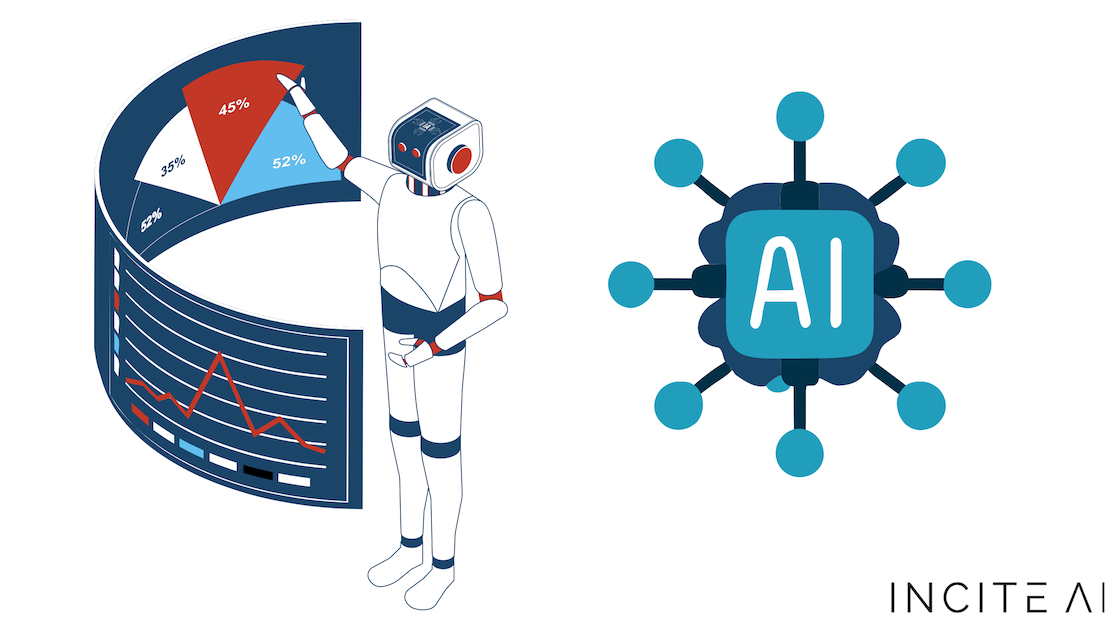Top 10 Tips On Assessing The Market Coverage Of Ai Stock Predicting/Analyzing Trading Platforms
Market coverage is an essential aspect to consider when looking at AI trading platforms for stock prediction or analysis which determines the breadth and depth of markets and assets that you are able to access. A platform that has extensive market coverage lets you diversify your portfolio, explore possibilities across the globe, and to adapt to a variety of trading strategies. These are the top ten tips to assess the market cover of these platforms.
1. Evaluate Supported Asset Classes
Stocks - Check that the platform you choose to use can cover the major markets for stocks (e.g. NYSE NASDAQ LSE HKEX) as well as includes small-caps, mid-caps and large-caps.
ETFs Check whether the platform lets you select from a wide range of ETFs. This can provide you with a variety of exposure.
Futures and options. Check that the platform is compatible with derivatives, such as options, futures, and leveraged instruments.
Commodities and Forex: Determine if the platform includes currency pairs and precious metals, energy commodities, as well as agricultural commodities.
Cryptocurrencies. Verify if the currency supports the major altcoins and cryptocurrencies (e.g. Bitcoin, Ethereum).
2. Check Coverage Area
Global markets - Check that the platform is able to serve all major markets across the globe, including North America (including Canada), Europe, Asia-Pacific markets and emerging ones.
Regional focus: Find out if the platform specializes in particular markets or regions that align with your business interests.
Local exchanges: Check whether your platform is compatible with local and regional exchanges that match your needs or your strategy.
3. Think about comparing real-time data to delayed data Delayed Data
Real-time Data: Make sure that the platform has real-time information for trading, and to make timely decisions.
Delayed Data: See whether the delayed data could be accessed for free or for an affordable cost. These could be enough for long term investors.
Data latency. Verify whether the platform minimizes the time it takes to process real-time feeds, especially when it comes to high-frequency trading.
4. Analyze historical data availability
In depth of Historical Data: Make sure the platform offers extensive historical data for backtesting as well as analysis and testing (e.g. 10plus years).
Examine the precision in historical data.
Corporate actions - Check the historical records to make sure it covers stock splits, dividends, in addition to other corporate actions.
5. Check market depths and order books
Level 2 data: Ensure the platform provides Level 2 data (order book depth) for improved price search and execution.
Bid-ask Spreads: Ensure that the platform displays live spreads between bid and ask to ensure precise pricing.
Volume data: Ensure that the platform provides detailed information on volume to analyze market activity and liquidity.
6. Review the coverage of Indices Sectors
Major indices - Ensure your platform can support major indices, like the S&P 500 (e.g. NASDAQ 100 or FTSE 100), for benchmarking using indexes.
Data specific to a sector to provide targeted analysis, check if the platform offers information on a specific industry (e.g. technology, healthcare, or energy).
Customized indices. Check that the platform is able to track or create custom indices that satisfy your criteria.
7. Test the combination of Sentiment and News Data
News feeds: Ensure the platform incorporates live news feeds of reputable sources (e.g., Bloomberg, Reuters) to track market-moving events.
Use the tool's sentiment analysis using data from social media, news or other sources.
Event-driven strategy: Check that the platform is compatible with the use of event-driven trading strategies (e.g. announcements of earnings economic reports, announcements of earnings).
8. Verify Multi-Market Trading Capabilities
Cross-market trade: Check that the platform allows for trading across asset and market categories from a common interface.
Currency conversion: Find out if your platform supports multi-currency trading and automated currency conversion.
Time zone support: Determine if the trading platform is compatible with various time zones to trade on global markets.
9. Examine Alternative Data Sources
Alternative data - Check to see if there are alternative sources of data that can be integrated into the platform (e.g. web traffic, satellite imagery, or transactions with credit cards). This can give you unique information.
ESG data - Make sure that the platform provides environmental, governance, and social data (ESG). This is important for socially conscious investing.
Macroeconomic data: Make sure that the platform has macroeconomic data (e.g. GDP, inflation) to perform fundamental analysis.
10. Review Customer Feedback and Market Reputation
User reviews: Look for user reviews to gain a better understanding of the platform.
Check for the platform's industry reputation. This includes recognition and awards from experts in the area.
Case studies: Search for testimonials or case studies that showcase the platform's effectiveness in specific areas or asset classes.
Bonus Tips
Trial period - Use the demo or trial for free to test out the market coverage and data coverage.
API access: Check if your platform's API can access market data in a programmatic manner to conduct custom analysis.
Support for customers: Ensure that the platform is able to assist you in the case of market-related questions or issues with data.
These suggestions will allow you evaluate the market coverage offered by AI trading platforms which predict or analyze stock prices. This way you'll have the ability to select the platform that provides you with the data and markets you need for successful trading. You can broaden your portfolio and profit from new opportunities with the help of comprehensive market coverage. Have a look at the top rated learn more for market ai for site examples including ai investment platform, ai investing platform, best AI stock, investment ai, options ai, AI stock, using ai to trade stocks, ai for investing, AI stocks, ai investing platform and more.

Top 10 Tips On Assessing The Effectiveness Of Ai Analysis And Stock Prediction Platforms
Scalability is a key aspect in determining if AI-driven platforms for stock forecasting and trading are able to handle growing demand from users, increasing data volumes and market complexity. These are the top 10 tips to assess scalability.
1. Evaluate Data Handling Capacity
Tips: Make sure the platform can process and analyze large datasets (e.g., historical stock data, live market feeds, as well as alternative data such as news and social media).
Why: Scalable platforms need to manage increasing volumes of data without performance degradation.
2. Test the Real-Time Processing Capability
Tip: Assess how well the platform handles real-time data streams, for example, live stock prices or breaking news.
The reason: The immediate analysis of trading decisions is crucial since delays can cause to you missing out on opportunities.
3. Cloud Infrastructure and Elasticity
Tips: Find out if the platform uses cloud-based infrastructure (e.g., AWS, Google Cloud, Azure) and has the ability to scale resources in a dynamic manner.
Why? Cloud platforms allow for elasticity. The system is able to scale up or back down according to the demand.
4. Algorithm Efficiency
Tip 1: Evaluate the computational efficiency of the AI models used (e.g. reinforcement learning deep learning, reinforcement learning).
Why: Complex algoriths can consume a lot of resources, so the ability to optimize these algorithms is essential for scalability.
5. Examine Distributed and Parallel Computing
Check to see if your platform is using the concept of distributed computing or parallel processing (e.g. Apache Spark, Hadoop).
The reason: These technologies enable quicker data processing and analytics across multiple nodes.
Examine API Integration and Interoperability
Test the platform’s ability to connect external APIs.
Why? Seamless integration allows the platform to be adapted to the changing environment of trading as well as data sources.
7. Analyze User Load Handling
Utilize a high-traffic simulator to check the response of the platform under stress.
The reason: Scalable platforms must deliver the same quality of service regardless of the number of users.
8. Examine the model's retraining capabilities and the model's adaptability
Tip: Evaluate how frequently and efficiently AI models are trained with the help of new data.
The reason is that markets always change It is crucial to ensure that models are up-to-date.
9. Verify that Fault-Tolerance and Redundancy are in place.
Tip - Make sure that your platform is equipped with redundancy and failover mechanisms to handle hardware or software failures.
Reason: Trading can be expensive Therefore the ability to handle faults and scale are vital.
10. Monitor Cost Efficiency
Tips: Think about the costs of scaling up your platform. Take into account cloud resources such as storage for data as well as computing power.
What is the reason: The expense of scalability shouldn't be unsustainable. So, it's crucial to find a balance between performance and cost.
Bonus Tip: Future-proofing
Check that the platform incorporates new technologies (e.g. quantum computing and advanced NLP), and is able to adjust to regulatory changes.
These factors can assist you in assessing the scaleability of AI-based stock prediction systems and trade platforms. They'll also be sure they're robust efficient, reliable, ready for expansion, and are future-proof. See the top rated ai share trading info for website tips including AI stock predictions, best stock prediction website, AI stock predictions, can ai predict stock market, best AI stocks, AI stock price prediction, AI stock trader, chart ai trading, ai investment tools, can ai predict stock market and more.

Comments on “20 Free Ideas For Choosing AI Stock Trading Platforms”